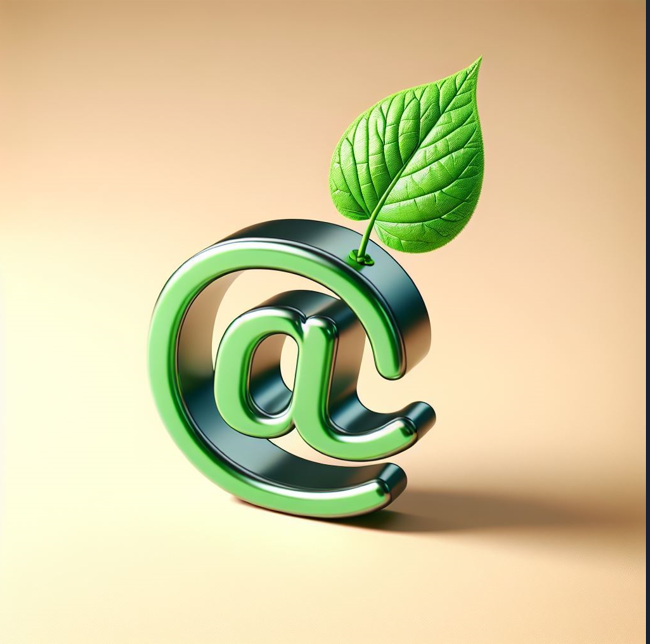
As the digital world continues to expand, so does its environmental footprint. From sprawling data centers to billions of connected devices, the information technology sector is responsible for a significant and growing portion of global energy use and e-waste.
Enter Green IT—a strategic approach to designing, using, and disposing of technology in a way that minimizes environmental impact. As organizations work toward sustainability goals and governments impose stricter regulations, Green IT is becoming not just a responsible choice, but a business imperative.
What Is Green IT?
Green IT (also known as sustainable IT or green computing) refers to the use of computing resources in an environmentally friendly manner. It covers the entire lifecycle of technology including sustainable manufacturing and material usage, efficient energy consumption, and responsible disposal and recycling of electronics. Green IT takes into account the role that information technology plays in enabling sustainability across industries. Examples include tools like smart building systems, remote work solutions, and data-driven carbon monitoring.
Why Green IT Matters
Understanding the definition of Green IT is one thing. Comprehending why it matters is another. Here are three main ways Green IT can impact your company and the world in general:
1. Energy Consumption
The IT sector consumes 7–10% of global electricity, a number expected to grow with the rise of AI, IoT, and edge computing. Data centers alone are massive energy users, often running 24/7 with high cooling demands.
2. Carbon Emissions
Estimates show that global IT operations account for 2–4% of greenhouse gas emissions, rivaling the airline industry. Without action, this could double by 2030.
3. E-Waste
Each year, the world generates over 50 million metric tons of electronic waste, much of which ends up in landfills or is improperly recycled, posing health and environmental hazards.
Key Strategies for Green IT
Given the potential impact of IT operations on our world, companies have many internal and external incentives to implement Green IT practices. These measures take many forms, but all start with being more aware of the impact that small improvements can have over the lifecycle of IT systems and assets.
A simple way to adopt Green IT practices is to implement energy-efficient hardware when buying new equipment or replacing older systems. Using ENERGY STAR-rated equipment and low-power components can significantly cut energy usage. Virtualization can also reduce the number of physical servers needed. Likewise, migrating workloads to cloud providers with renewable-powered data centers (like IBM, Microsoft Azure, Google Cloud, or AWS) can drastically reduce an organization's carbon footprint.
Data Center Optimization can greatly improve an organization’s carbon footprint and bottom line. Every year, advanced cooling systems, AI-driven energy management, and location selection (e.g., cooler climates or access to renewables) are helping data centers become more sustainable.
Focusing on the device lifecycle of IT assets is another way to foster Green IT and establish a circular economy. Responsible IT asset management should include proper recycling, refurbishing, or repurposing of end-of-life devices. Extending hardware lifespans and sourcing from sustainable vendors reduces waste, saving the environment while saving your organization money.
While most of the above strategies focus on physical IT assets, it’s important not to overlook the software that these servers and devices run every day. Smart software development can make a huge difference; put simply, efficient code uses fewer computing resources. “Green coding” practices aim to optimize algorithms and reduce CPU/GPU load, which is particularly important as AI and big data scale up.
How IT Enables Broader Sustainability
Green IT isn't just about reducing its own footprint—it's also a key enabler for sustainability across all sectors. IT solutions help companies monitor and report carbon emissions while optimizing logistics and reducing waste.
For example, by enabling remote work and virtual collaboration, information technology has dramatically reduced the need to travel. This takes vehicles off the road, planes from the sky, and countless tons of carbon from the atmosphere. Likewise, IT systems are used to automate energy usage in buildings and factories. This helps companies optimize heating, cooling, and other building systems to avoid waste and control overall costs.
Bottom-Line Business Benefits
As you can see, sustainability isn't just about ethics; it's about economics and competitiveness. An efficient infrastructure lowers energy costs and helps companies with regulatory compliance while meeting carbon reporting and ESG standards.
An intangible yet important benefit of Green IT is improved brand reputation and investor appeal. Clean tech and green services can significantly raise the profile of an organization and set it apart from the competition.
Getting Started: Simple Steps for IT Teams
While the topic of Green IT may seem overwhelming, remember that a journey of a thousand miles starts with a single step. There are simple measures you can take today that will start paying dividends tomorrow and well into the future. Here are a few ways you can get started:
- Adopt power management settings on all devices
- Choose green-certified hardware vendors
- Consolidate or virtualize servers
- Encourage responsible recycling and donation of old equipment
- Measure the energy and carbon impact of your IT organization, then set reduction goals
Food for Thought
Green IT is no longer a niche concern. It’s a core component of modern IT strategy and corporate sustainability. As technology continues to power innovation, it must also support our planet's long-term health.
Whether you're managing a global data center or just choosing your next laptop, the decisions you make in IT today will shape the environment of tomorrow. And LRS can help, too! Our AI and Big Data team has extensive experience in sustainability solutions.
Together, we can make a difference. Click here to contact us today!